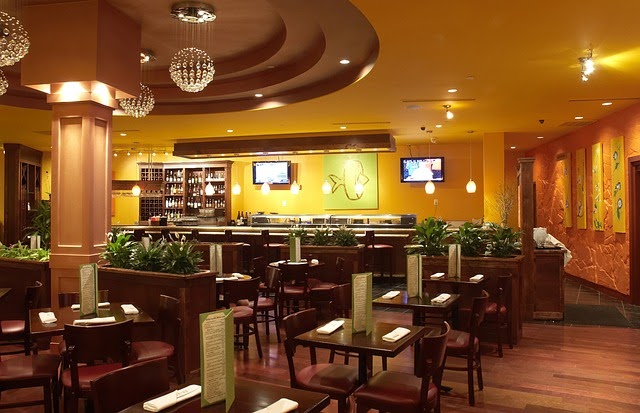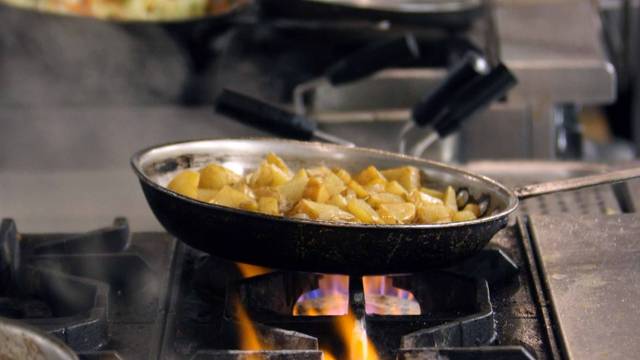Pan Asian Dining Islamabad: Enjoy Genuine Asian Dishes
Wiki Article
Savor Genuine Oriental Cuisine With a Pan-Asian Spin for a Cooking Journey
Embarking on a cooking journey through authentic Asian cuisine, improved with a Pan-Asian spin, uses a distinct chance to explore the abundant tapestry of tastes that define the area's diverse culinary customs. This experience welcomes you to savor the exquisite equilibrium of preferences-- wonderful, salted, spicy, and sour-- integrated by fragrant herbs and spices. Think of the ingenious blend of Thai curry and ramen or the unanticipated pleasure of sushi burritos. As you ponder these enticing meals, consider the cultural narratives and historical impacts that shape them, each bite supplying a tale waiting to be found.
Checking Out Pan-Asian Flavors
In the world of international gastronomy, Pan-Asian food stands out for its exceptional diversity and the unified interaction of tastes from various Oriental societies. This cooking method commemorates the one-of-a-kind components and abundant practices discovered throughout the continent, producing a tapestry of tastes that is both interesting and satisfying. Trick to Pan-Asian cuisine is its capacity to stabilize contrasting flavors-- wonderful, salted, spicy, and sour-- while highlighting the freshness and top quality of each ingredient.From the umami-rich soy sauce of Japan to the intense chili peppers of Thailand, Pan-Asian cuisine supplies a comprehensive scheme of flavors. These elements are commonly incorporated in inventive means, enhancing recipes with layers of intricacy. As an example, the usage of fragrant natural herbs such as lemongrass and cilantro, usual in Vietnamese and Thai cuisine, adds a revitalizing brightness to dishes, while the consolidation of coconut milk delivers a velvety, rich texture.
The focus on fresh produce and fragrant spices guarantees that each dish is not only a banquet for the preference buds but additionally for the detects. Pan-Asian cuisine invites restaurants to embark on a cooking journey, exploring the large and varied landscapes of Oriental gastronomy with every bite.
Fusion Dishes to Attempt
While Pan-Asian cuisine is commemorated for its typical flavors, the contemporary cooking landscape is increasingly accepting fusion meals that mix these traditional aspects with impacts from other areas. This cutting-edge technique not only honors the rich heritage of Oriental culinary arts yet also presents novel taste experiences that interest modern tastes.
A prime instance of such a blend meal is the Korean-Mexican taco, where marinated bulgogi beef is covered in a warm tortilla, covered with kimchi and a spicy gochujang-infused salsa. This mix weds the bold, tasty flavors of Korea with the dynamic, fresh elements of Mexican cuisine. Likewise, sushi burritos have actually obtained popularity, amalgamating the fragile creativity of Japanese sushi with the passionate, hand-held benefit of a burrito, frequently featuring blend ingredients like tempura shrimp and avocado with a drizzle of wasabi mayo.
Another noteworthy dish is Thai curry ramen, which infuses the luscious, fragrant flavors of Thai curry into the comforting brew of traditional Japanese ramen, creating a harmonious mix that entices the senses. These blend meals expand past mere uniqueness; they stand for a culinary discussion between cultures, encouraging expedition and technology worldwide of Pan-Asian food.
Essential Active Ingredients and Flavors
To truly value Pan-Asian food, one must understand the crucial ingredients and spices that create its structure. This diverse culinary design draws from an abundant tapestry of Eastern practices, employing a harmonious useful link mix of structures and flavors.Aromatic aspects are crucial, with lemongrass, garlic, and ginger being ubiquitous throughout various Pan-Asian recipes. These active ingredients give a great smelling base that enhances the complexity of tastes. Flavors such as celebrity anise, cardamom, and cinnamon introduce warmth and character, resembling influences from areas like China and India.

Food Preparation Methods and Tips
Mastering the art of Pan-Asian cuisine needs familiarity with its unique cooking methods, each adding to the lively tapestry of tastes this cooking practice is commemorated for. Central to these approaches is the stir-fry, a rapid food preparation technique that preserves the nutritional stability and vibrant colors of components. Using a wok, the stir-fry approach enables even heat distribution, essential for attaining the characteristic texture and taste balance of Pan-Asian recipes.One more essential technique is steaming, especially prevalent in our website Chinese food. This mild method keeps the natural flavors and nutrients of active ingredients, making it excellent for seafood and veggies. Dumplings, a beloved staple, frequently gain from steaming, leading to soft, delicious textures.
Barbecuing, also indispensable, imparts great smoky depths to meals such as Korean bulgogi or Japanese yakitori (pan asian restaurant Islamabad). This technique often includes marinading ingredients, enabling flavors to penetrate deeply before food preparation over an open fire or hot plate
Finally, understanding the art of balancing tastes-- pleasant, sour, salty, bitter, and umami-- is critical. Appropriately layering these aspects can elevate a meal from normal to phenomenal, providing a complicated and satisfying culinary experience that embodies the essence of Pan-Asian food.
Eating Experiences Worldwide
Across the world, Pan-Asian food supplies an unparalleled eating experience, commemorated for its rich tapestry of tastes and lively discussions. This cooking sensation has transcended cultural borders, recording the hearts and tastes buds of food lovers worldwide. In cosmopolitan cities fresh York, London, and Sydney, Pan-Asian dining establishments work china chef as melting pots where cooking traditions from Thailand, Japan, China, and beyond assemble, offering diners with a diverse mix of dishes that highlight the region's diversity.The international allure of Pan-Asian cuisine exists in its capability to use both credibility and development. Chefs masterfully marry traditional ingredients such as lemongrass, soy sauce, and miso with contemporary methods, causing meals that are both refreshingly new and acquainted. This combination allows diners to start a cooking journey that appreciates heritage while accepting modernity.
Moreover, dining experiences are raised via thoughtfully developed settings that reflect the ethos of Pan-Asian visual appeals. From minimal Japanese-inspired insides to vibrant Thai-themed rooms, each restaurant uses an unique setting that enhances the culinary offerings. Because of this, clients are not just taking in a meal but partaking in a cultural experience, making Pan-Asian eating a really global phenomenon.
Verdict
The expedition of Pan-Asian food provides a profound understanding of the complex interaction of tastes and culinary customs throughout Asia. By embracing combination dishes such as Thai curry ramen and sushi burritos, the culinary journey not only highlights the versatility of conventional ingredients however additionally showcases ingenious modern techniques. This gastronomic journey, enriched by important seasonings and cooking approaches, provides an one-of-a-kind chance to value the multiculturalism and cooking virtuosity that define Pan-Asian food on a global range.Beginning on a cooking journey via genuine Oriental food, improved with a Pan-Asian spin, supplies a special chance to check out the abundant tapestry of tastes that specify the area's varied culinary customs.In the realm of global gastronomy, Pan-Asian food stands out for its impressive variety and the unified interplay of flavors from various Eastern societies. Key to Pan-Asian food is its capability to stabilize contrasting tastes-- wonderful, salted, spicy, and sour-- while highlighting the quality and top quality of each active ingredient.

Report this wiki page